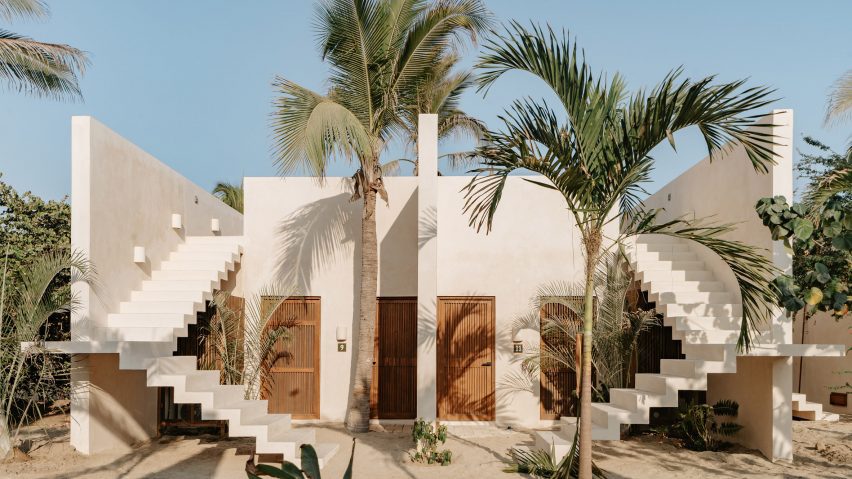
Casa Yuma hotel built with "vegetal concrete" and pink bricks
Architecture studio TAAC and interior designer Sara Skalli have created a seaside hotel in Mexico that uses traditional materials including chukum – a finish made from tree resin and limestone.
Named Casa Yuma, the 25-room boutique hotel is located on Playa Los Naranjos, a short drive from Puerto Escondido on the Pacific coast of Mexico.
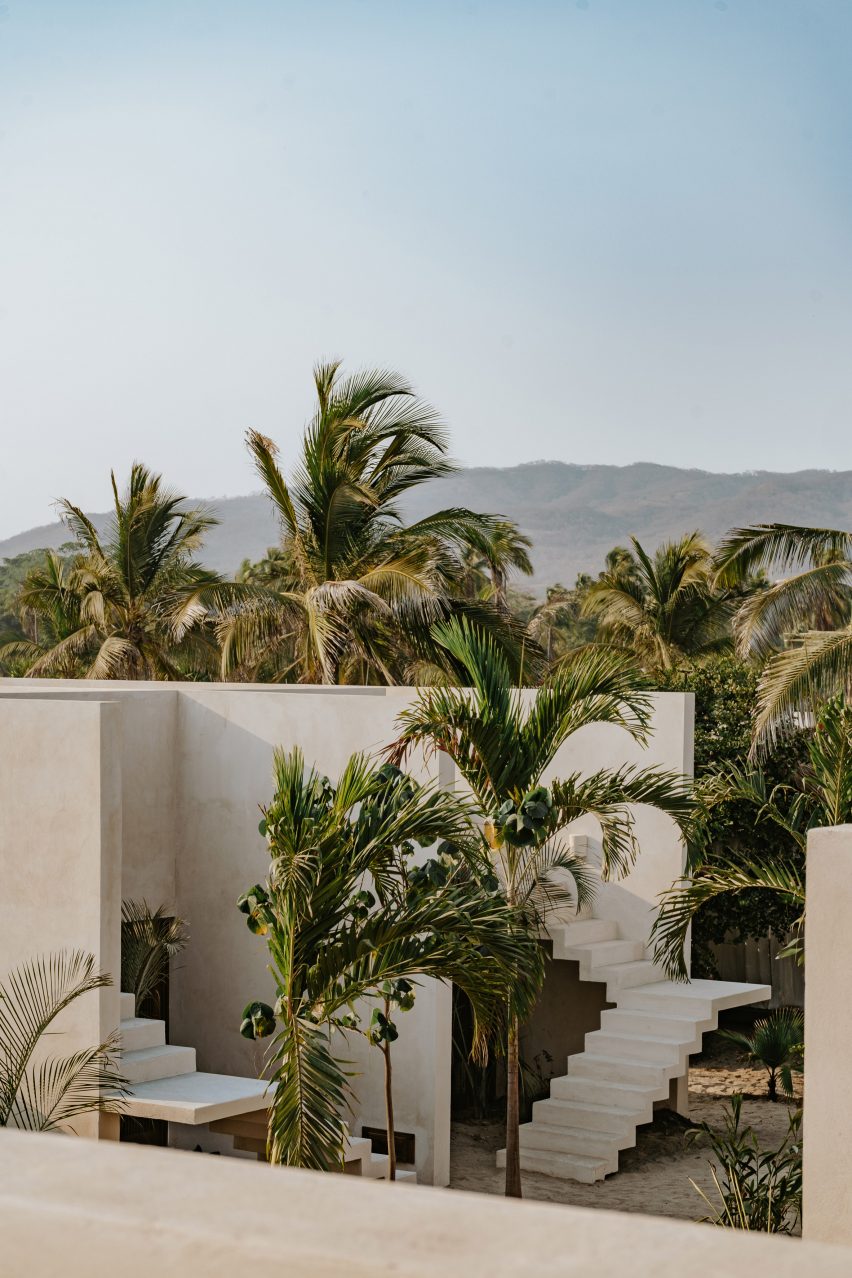
Skalli, who co-owns the hotel with friends Camille Lambert and Tim de Belloy, felt it was important for the buildings to utilise materials native to the region.
She and the project architect, TAAC founder Ricardo de la Concha, devised a materials palette that centres around the use of chukum.
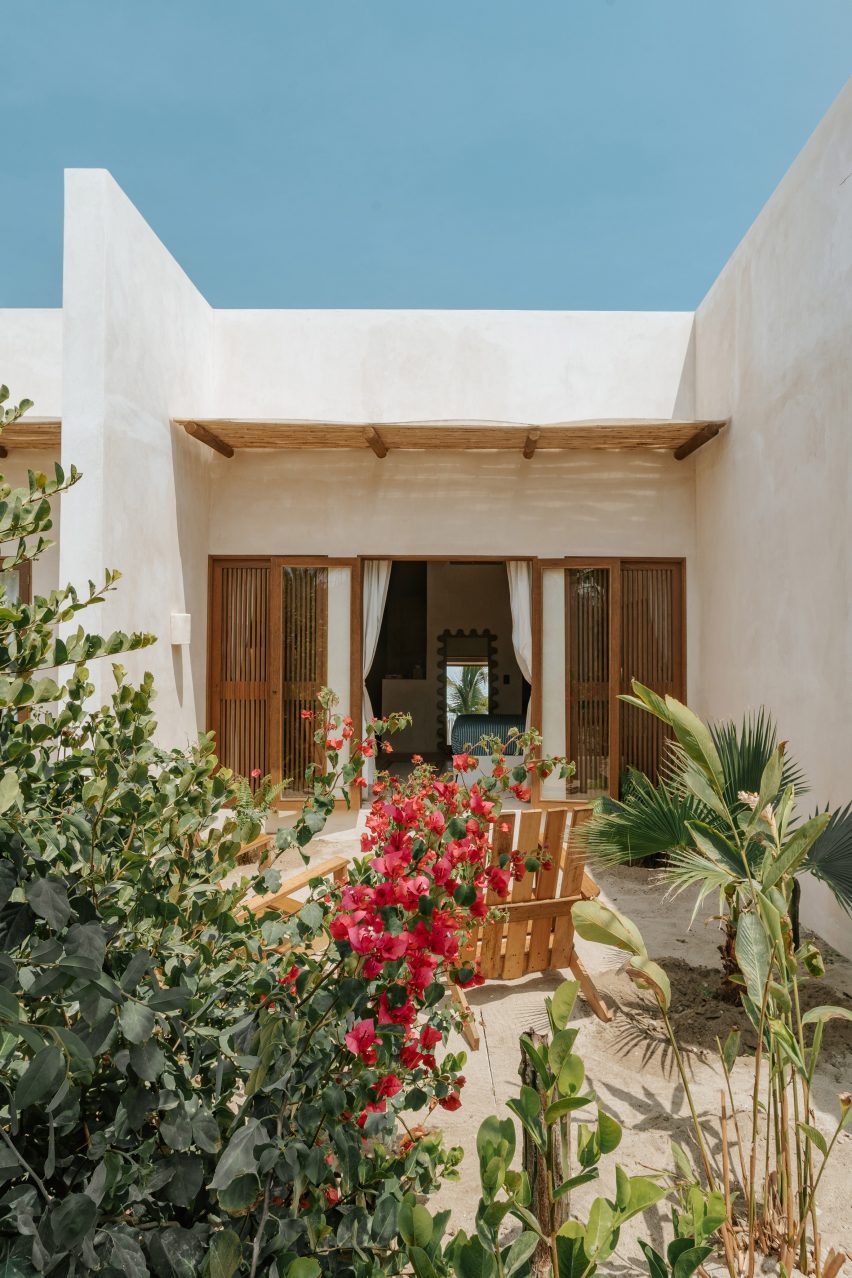
Described as a "vegetal concrete", this water-resistant, plaster-like material is made by combining the resin of indigenous chukum trees with limestone-based stucco.
The material often has a strong red tone – as seen in other new Mexico buildings like as the Xique Boutique Hotel and Tulix housing – although the colour here is closer to a pale concrete-like grey.
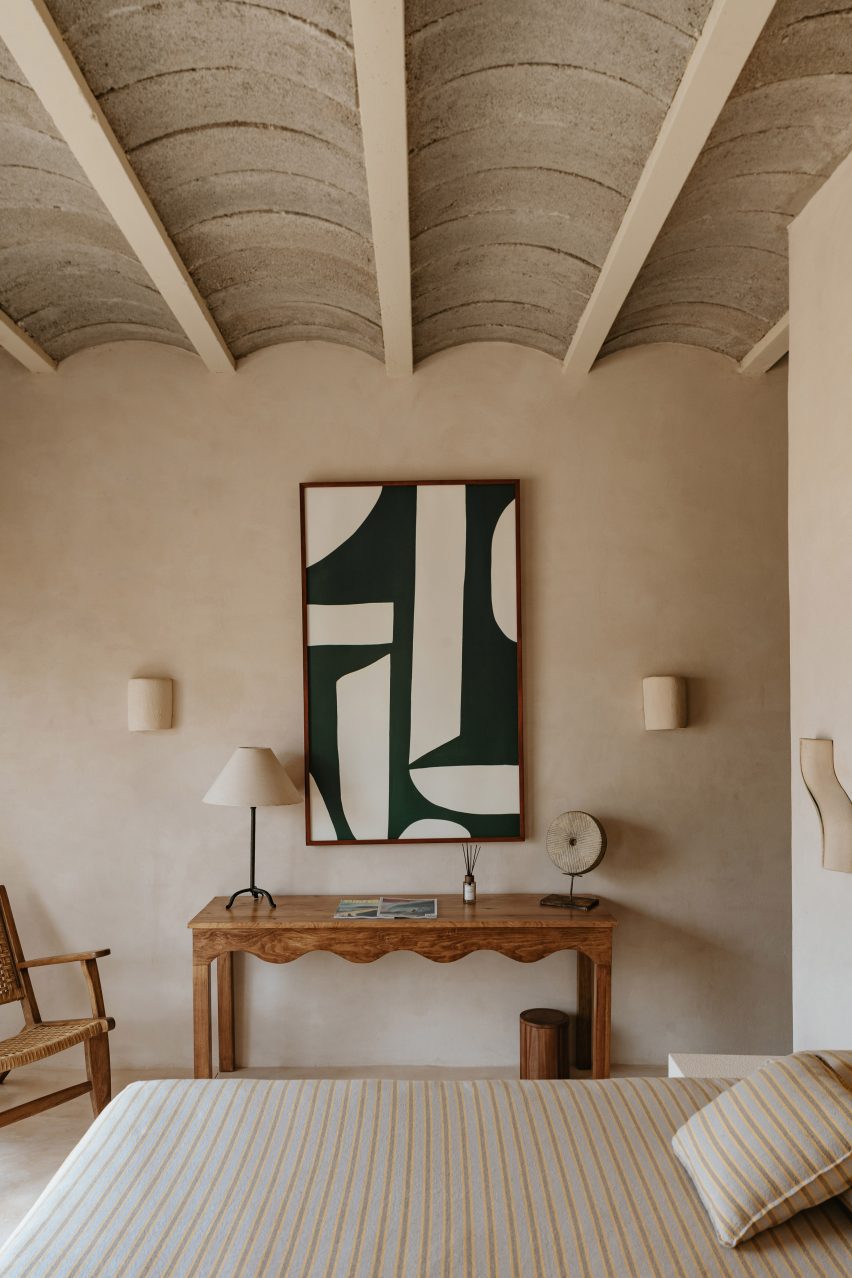
Skalli said the use of chukum was intended to create "an ambience that is both organic and sustainable".
"My main goal was to create an environment where elegance harmoniously blends with the surrounding nature while reflecting the warmth and authenticity of this unique land," she said.
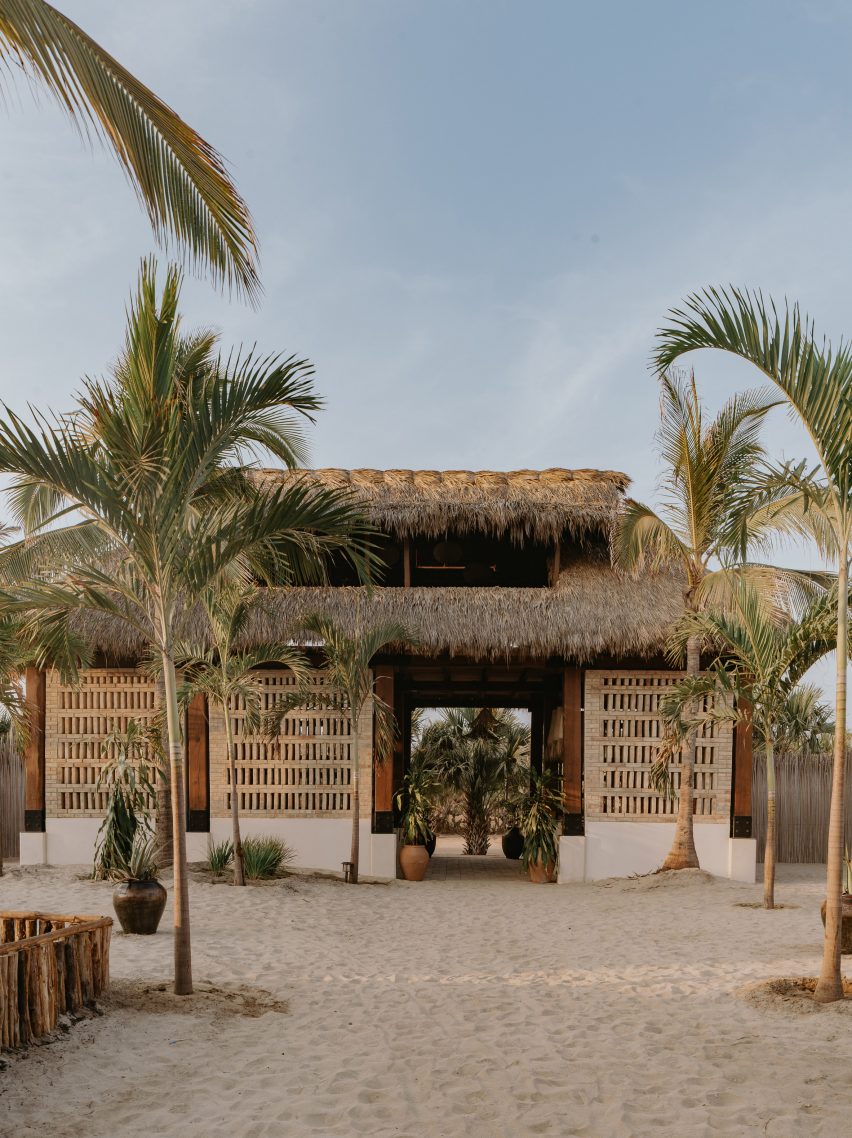
The materials palette also includes "salmon pink" adobe bricks from Puebla, which form decorative screen walls, and locally sourced macuil wood, used to build furniture and joinery.
"The use of materials of Mexican origin was of vital importance," added De la Concha.
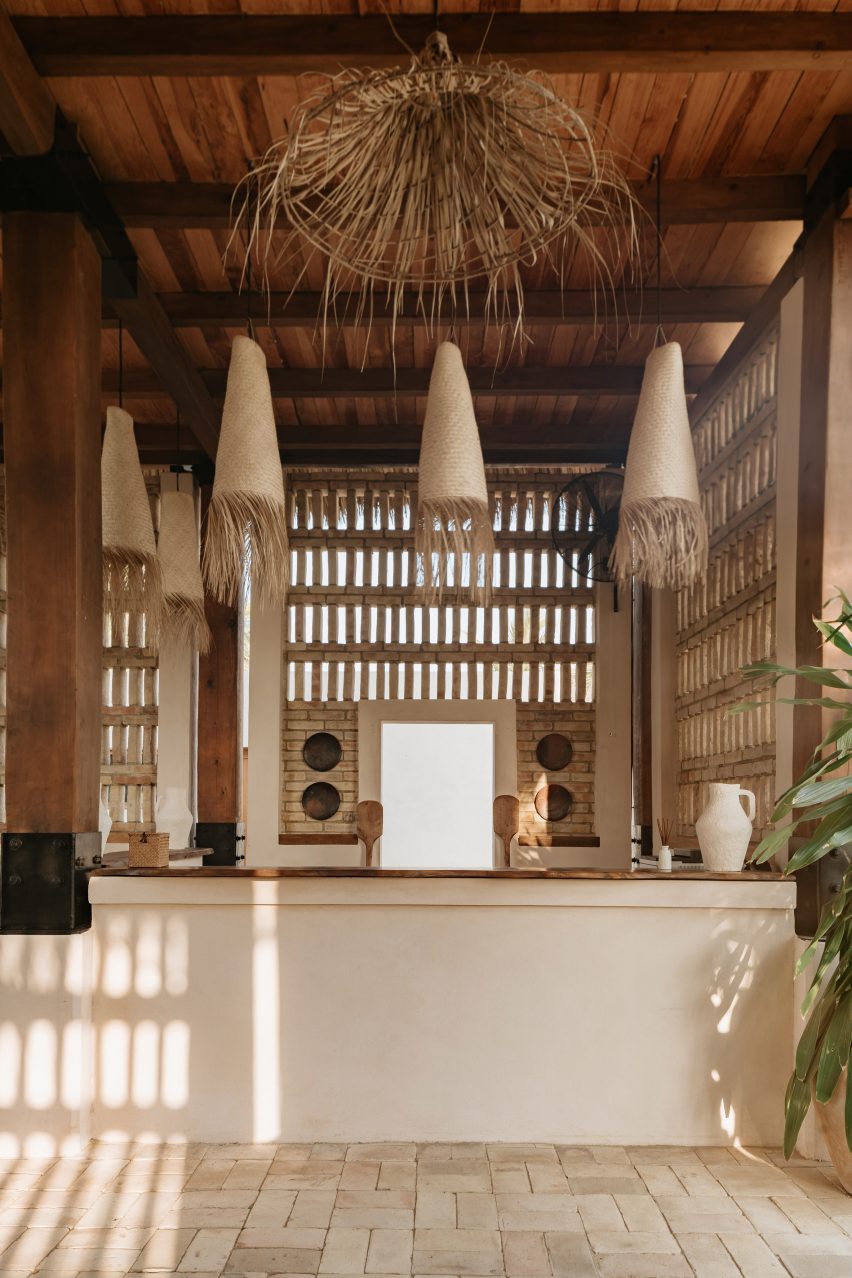
Casa Yuma is situated between the seafront and a vast grove of palm trees. It is formed mainly of single-storey buildings, with zigzagging staircases providing access to rooftop patios.
The reception is housed inside a palapa – a traditional Mexican hut with a palm leaf roof. From here, guests are led past the bedroom suites to arrive at facilities on the beachfront.
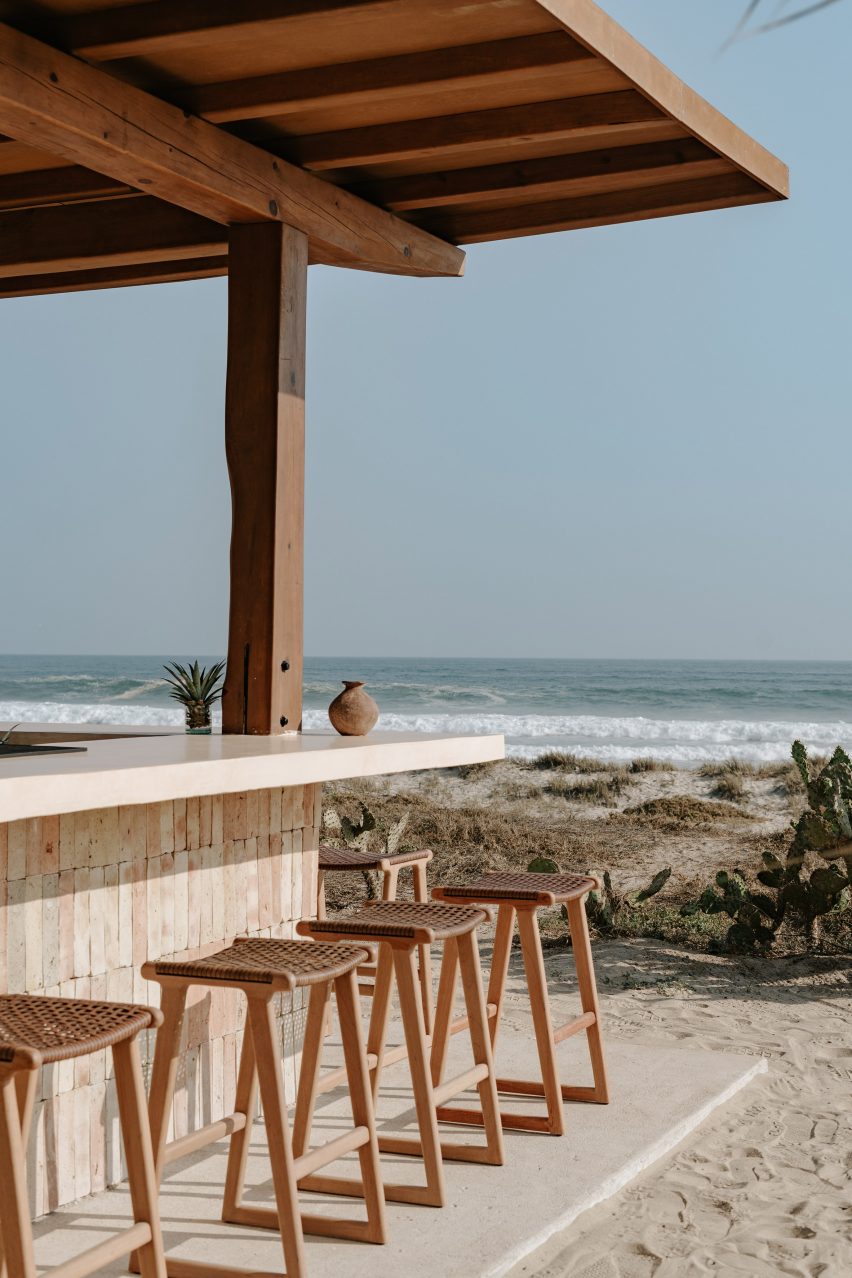
These facilities include an open-air restaurant, co-working lounge, beach bar, swimming pool, sunken firepit area and a spa cabin.
"The layout of the elements is based on a linear axis with a direct path from the entrance to the beach, passing through the rooms to reach a pool facing the sea," said De la Concha.
He said the concept was for "a barefoot hotel" where guests always have the feeling of being on the beach.
"We want to create a unique atmosphere so that guests feel comfortable in every corner of the hotel and feel like they have found a second home," added co-owner Tim de Belloy.
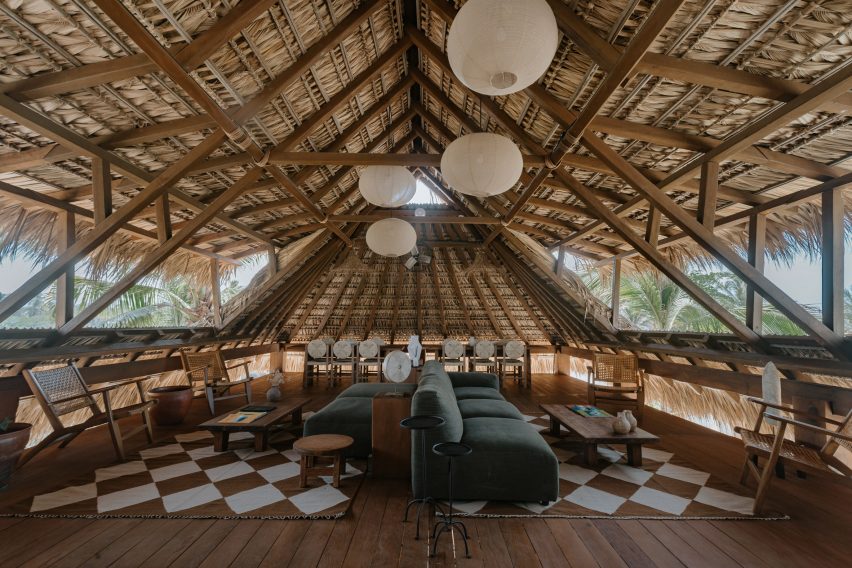
The interior design follows a similar ethos to the architecture, with craft objects and textiles sourced from local makers. These include handmade wall tiles, minimal nightstands, woven rugs and striped bedspreads.
"Most of the decorative elements come from incredibly talented local artisans and underscore our commitment to preserving regional culture," said Skalli.
"The aim is to offer unique spaces, where each room retains its individuality while inspiring a familiar experience."
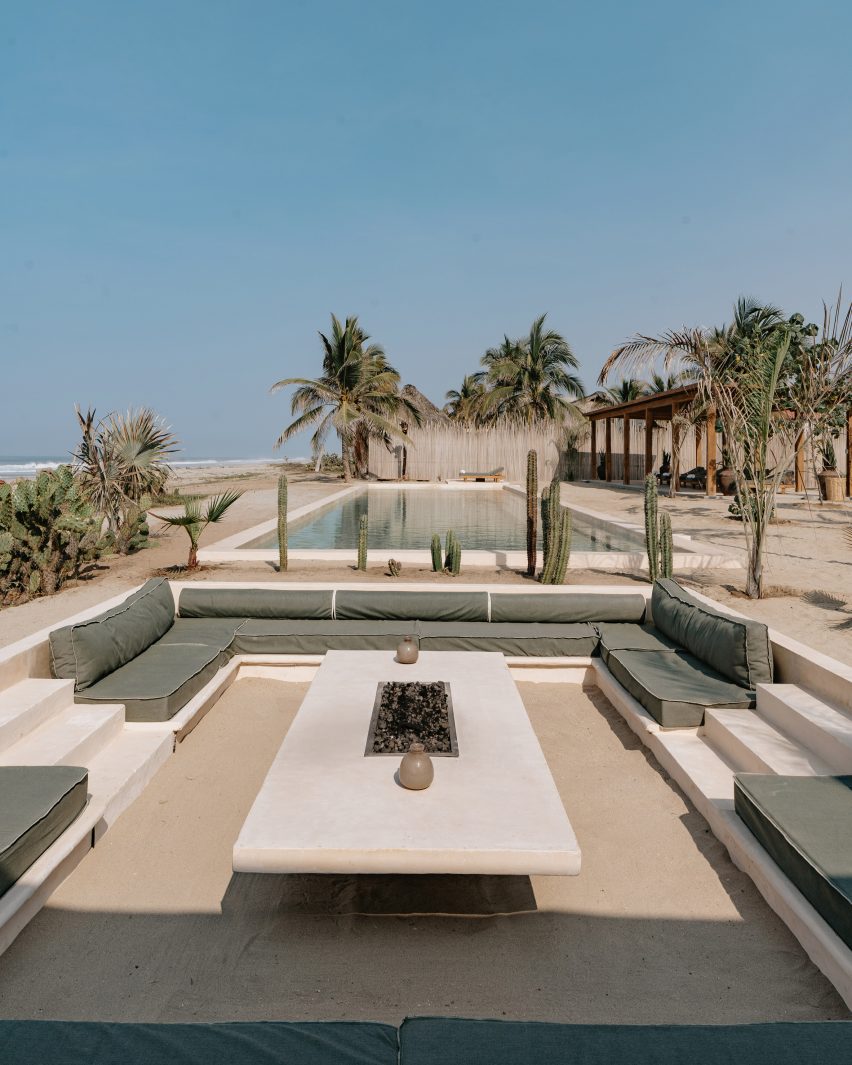
Other recent Mexican hotels on Dezeen include a hotel by Productora and Esrawe Studio on a hilly site in San Miguel de Allende and a boutique hotel coated in pink chukum and set in an artificial wetland in Puerto Escondido.
The photography is by Jasson Rodriguez, courtesy of Casa Yuma.